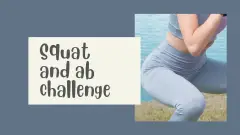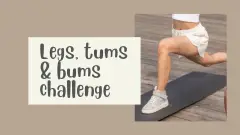
Intensity level: beginner/intermediate
Benefits: these exercises will tone up all your thigh muscles, as well as your glutes
Safety: please read the general safety information here.
What you need: you can do the exercises barefoot, or in flat comfortable footwear. If you’re working on a slippery floor, make sure you have something with some grip on your feet. You’ll also need a wall with some space around it.
30 day thigh challenge chart
There are 5 exercises, which are split into two sets that alternate daily through the challenge. The two sets of exercises are:
Set 1 – leg lifts to the side and leg lifts behind
Set 2 – squats plus 2 squat variations
The chart shows the reps for each exercise every day and instructions for the exercises are below the chart. The number of reps for the exercises on the chart are for each leg. So, for example, on day 1 you do 8 reps on each leg and on day 2 you do 8 squats to each side and 8 leg lifts on each leg.
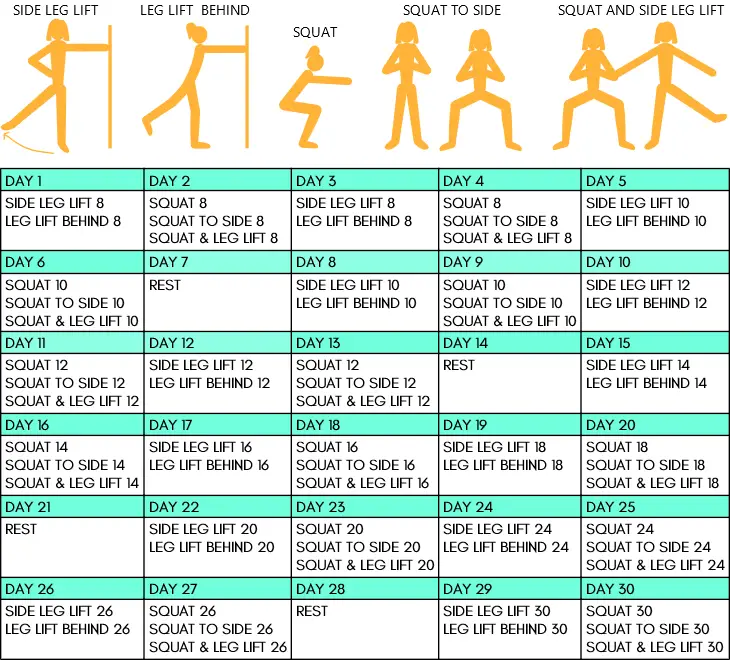
Exercise instructions
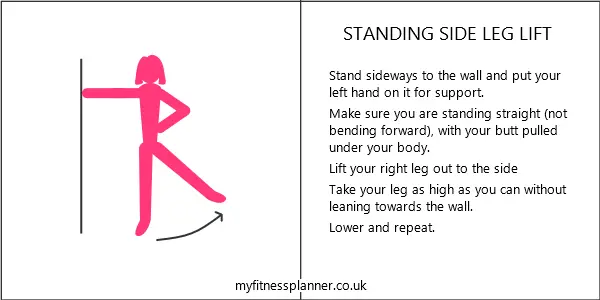
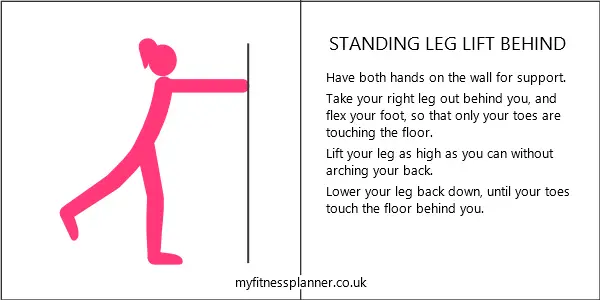
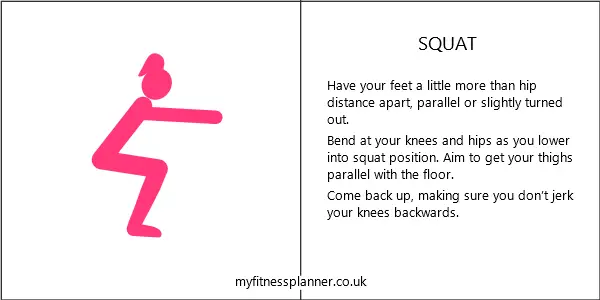
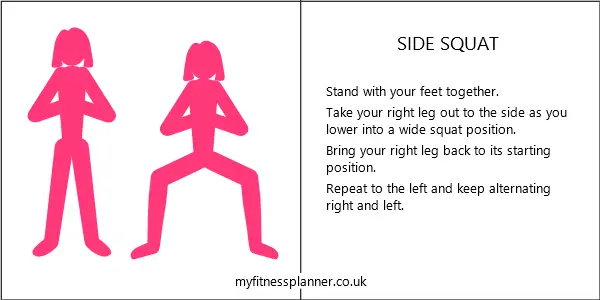
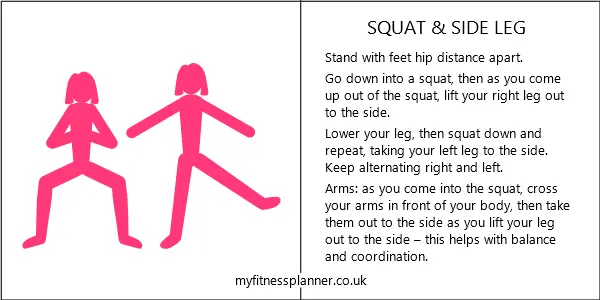
Squatting with good technique
Performing squats with proper form is important in order to enjoy maximum benefits of the exercise and minimize the risk of injury. Here’s why having good technique when doing squats is essential:
Enhanced Muscle Engagement: Proper squat form ensures that the target muscles, including the quadriceps, hamstrings, glutes, and core, are engaged effectively. This leads to improved muscle strength, tone, and endurance.
Injury Prevention: Improper squat form can strain the lower back, knees, and ankles, increasing the risk of injury. Maintaining a neutral spine, keeping the knees aligned over the toes, and avoiding excessive weight bearing on the toes are key to injury prevention.
Effective Movement Patterns: Squats are a fundamental movement pattern that translates into everyday activities, such as climbing stairs, getting up from a chair, and lifting objects. Proper squat technique helps develop these movement patterns correctly, enhancing overall functional movement.
Optimal Weight Distribution: Proper squat form ensures that weight is evenly distributed throughout the feet, preventing strain on specific areas. This promotes stability, balance, and alignment.
Increased Range of Motion: Proper squat form allows for a full range of motion, promoting flexibility and mobility in the hips, knees, and ankles. This can help prevent stiffness and reduce pain in these joints.
